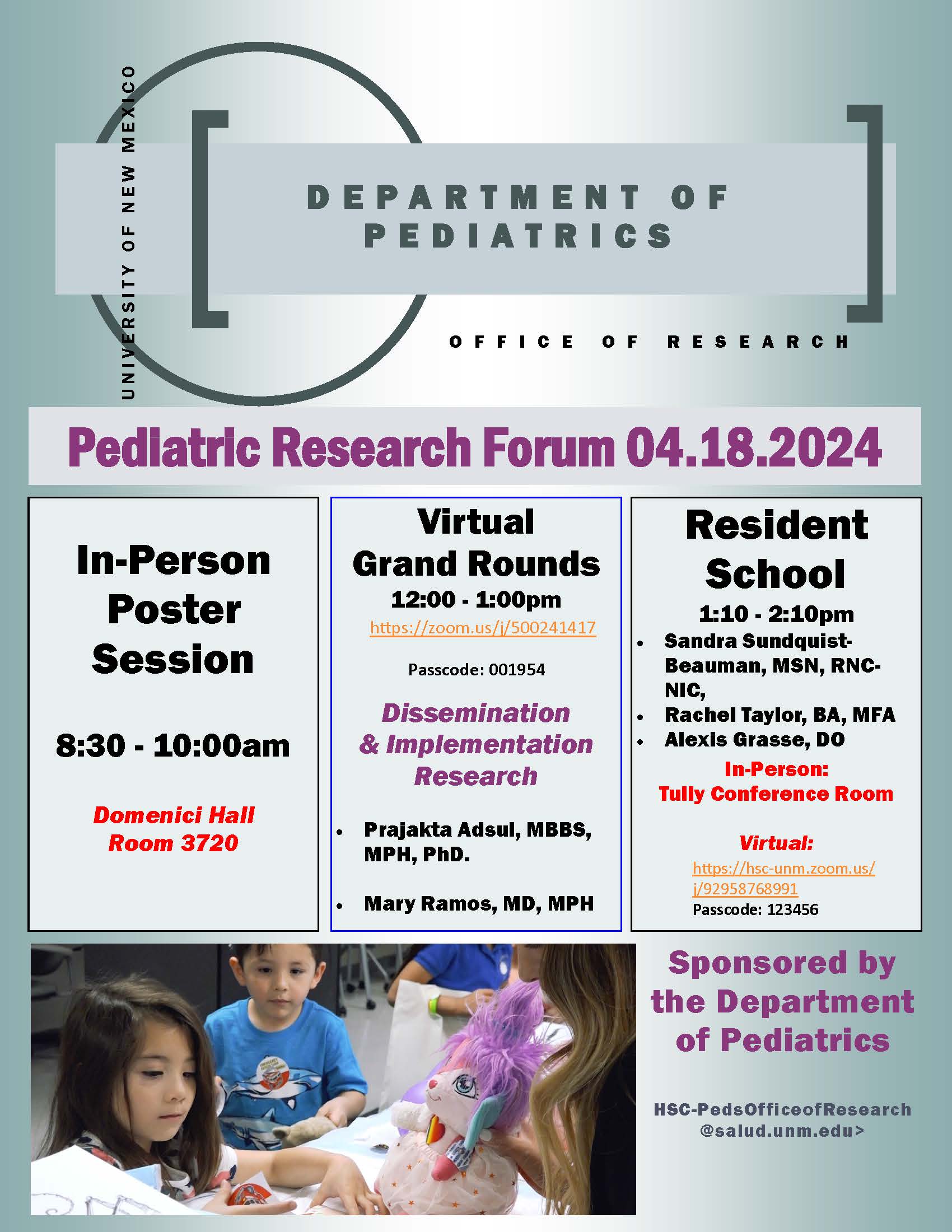Document Type
Poster
Publication Date
4-18-2024
Abstract
Background: Exposure to buprenorphine as a medication for opioid use disorder (MOUD) during pregnancy is associated with better outcomes compared to methadone for infants assessed with the Finnegan Neonatal Abstinence Scoring tool (FNAST). The ESC-NOW trial showed improved outcomes for infants assessed and managed with the Eat, Sleep, Console care approach (ESC) when compared to usual care with FNAST (UC). This sub-analysis assessed the association between antenatal MOUD type and infant outcomes by care approach used for managing infants with NOWS.
Methods: We compared a cohort of infants with antenatal exposure to buprenorphine or methadone who were managed using the Eat, Sleep, Console (ESC) care approach or the FNAST within ESC-NOW, a stepped-wedge cluster-randomized controlled trial. Infants were ³36 weeks’ gestation and treated for NOWS at one of 26 U.S. study hospitals.
Results: Of the 1305 infants enrolled, 949 infants (73%) were exposed to MOUD. Of those 347 infants (37%) received PT. An adjusted analysis of MOUD-exposed infants found that the proportion of buprenorphine-exposed infants who received PT was 19.3 absolute percentage points less than for those exposed to methadone (28.3% vs 47.6%; p <0.001). The mean LOT was 4.6 days shorter, and LOS was 4.5 days shorter in the buprenorphine group when compared to the methadone group (13.0 vs 17.6) and (18.1 vs. 22.6; p <0.001) respectively. When stratified by intervention group LOT for the UC group was 6.6 days shorter in the buprenorphine group compared to the methadone group (13.1 vs. 19.7; p <0.001). No difference was noted in the ESC group.
Conclusions: Exposure to antenatal buprenorphine MOUD was associated with a substantial decrease in receipt of opioid treatment, LOT, and LOS for infants with NOWS when compared to methadone. There was no difference in LOT between buprenorphine- and methadone-exposed infants managed with ESC.
Recommended Citation
Beauman, Sandra; Jessie R. Maxwell; Anne Hittson; Alberta S. Kong; Hengameh Raissy; NICHD Neonatal Research Network; and NIH ECHO Program IDeA States Pediatric Clinical Trials Network. "Antenatal Exposure to Medication for Opioid Use Disorder and Infant Outcomes in the ESC-NOW Randomized Controlled Trial." (2024). https://digitalrepository.unm.edu/hsc_2024_pediatric_research/8

